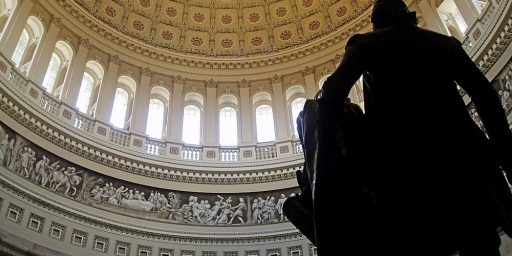Need to Know Share
UPI: Lack of secure communications hampers DHS
The Department of Homeland Security sent teams of officials to cities under threat during the recent holiday-period orange alert, because they lacked secure communication channels to state and local officials, the department’s second in command said Wednesday.
Deputy Secretary for Homeland Defense Adm. James M. Loy said that secure video conferencing facilities were still not available in the offices of all 50 of the nation’s governors but would be installed by July.
“That will allow a greater and much-needed dissemination of classified information to homeland security professionals around the country,” Loy told a conference of military officials and defense contractors. “I can tell you that during this last orange alert over the holidays we actually ended up sending executive visit teams out to cities where we had particular concerns, because we didn’t have that connectivity quite yet where we wanted it to be.”
“We must do better and we must do better faster,” he concluded.
Tuesday, Homeland Security Secretary Tom Ridge rolled out plans for the expansion of a secure, Internet-based communications network, which will allow department officials to communicate in real time by voice, text and data with their state and local counterparts.
***
Air Force Gen. Ralph Eberhart, who runs U.S. Northern Command, the element of the U.S. military responsible for the defense of the United States, joined Loy at the conference Tuesday. He said that barriers to effective information sharing were 10 percent technological and 90 percent cultural.
The mindset of the intelligence community had to change.
“We need to replace the ‘need to know’ mentality of the cold war with a ‘need to share’ mentality,” he said.
The Homeland Security Information Network — an expansion of an existing system that already links about 100 federal agencies, state offices, municipalities and other local government entities with a counter-terrorism mission — is designed to do just that, Ridge said.
This is surprising but then again, it shouldn’t be. We haven’t broken down the barriers yet within the professional intelligence community, where everyone has Top Secret clearances and is fully trained in the safeguarding of sensitive information. Sharing with the people who need the information at state and local ops centers is far more risky–more people, less training, less checking–and I understand the trepidation. It’s a veritable Catch-22: information is less valuable if it’s not properly safeguarded, yet it’s also less valuable if everyone who has a need to know, doesn’t.





Another major cultural issue is simply trusting people. I don’t have anything to do with DHS or NorthCom, but I do deal with these sorts of issues on a regular basis, and lemme tell you – getting someone, anyone, a fresh-from-scratch security clearance is a massively long process. Like, on the order of 1-2 years after you fill out the paperwork.
And frankly, while individual Governors can probably be trusted to handle classified material and info, how many people on the cabinet and staff of every Gov in the country can be trusted like that?
On a side note, I’d _love_ to see the background investigation on Ahnold.
—